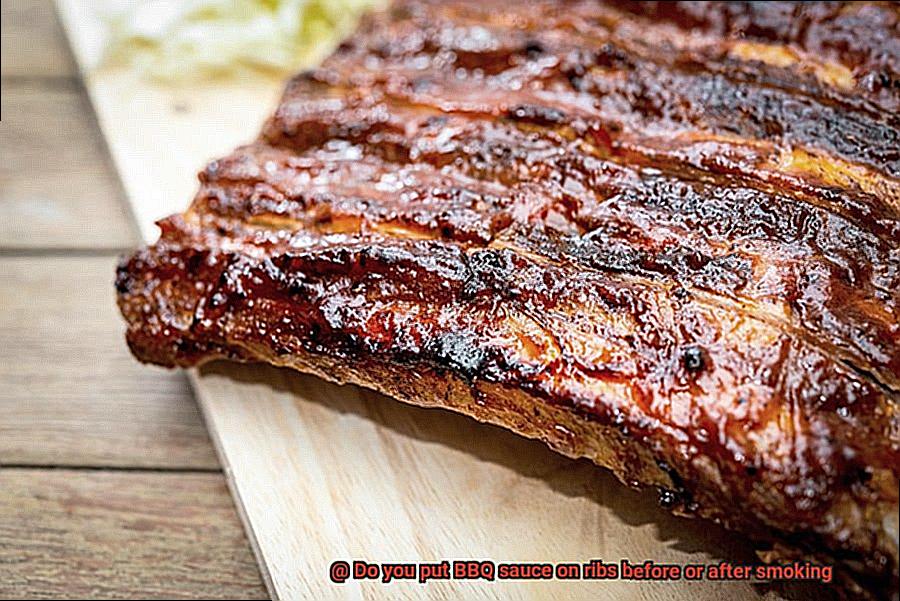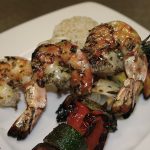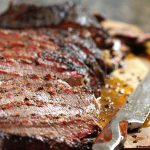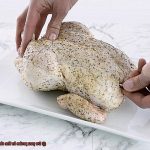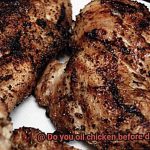Are you a BBQ fanatic who can’t resist the sweet, smoky flavor of perfectly cooked ribs? If so, you know that one of the most critical decisions in creating mouth-watering ribs is when to add BBQ sauce. The question remains: should you slather on the sauce before or after smoking the meat?
This decision can make all the difference in the taste, appearance, and texture of your ribs. As a pitmaster, it’s crucial to know which method works best for you. There’s no shortage of opinions in the BBQ community, with some insisting on applying the sauce before smoking and others advocating for waiting until the end.
In this article, we’ll explore both methods thoroughly and provide all the information you need to make an informed decision. First up: adding BBQ sauce before smoking. We’ll discuss why some pitmasters prefer this method and break down its advantages and disadvantages.
Next, we’ll dive into adding sauce after smoking. We’ll explain why some chefs prefer this method and give you all the pros and cons.
Finally, we’ll share our top tips for choosing the perfect BBQ sauce for your ribs – regardless of when you choose to apply it. So sit back, grab a cold drink, and let’s settle this delicious debate once and for all.
Contents
The Pros and Cons of Applying BBQ Sauce Before Smoking
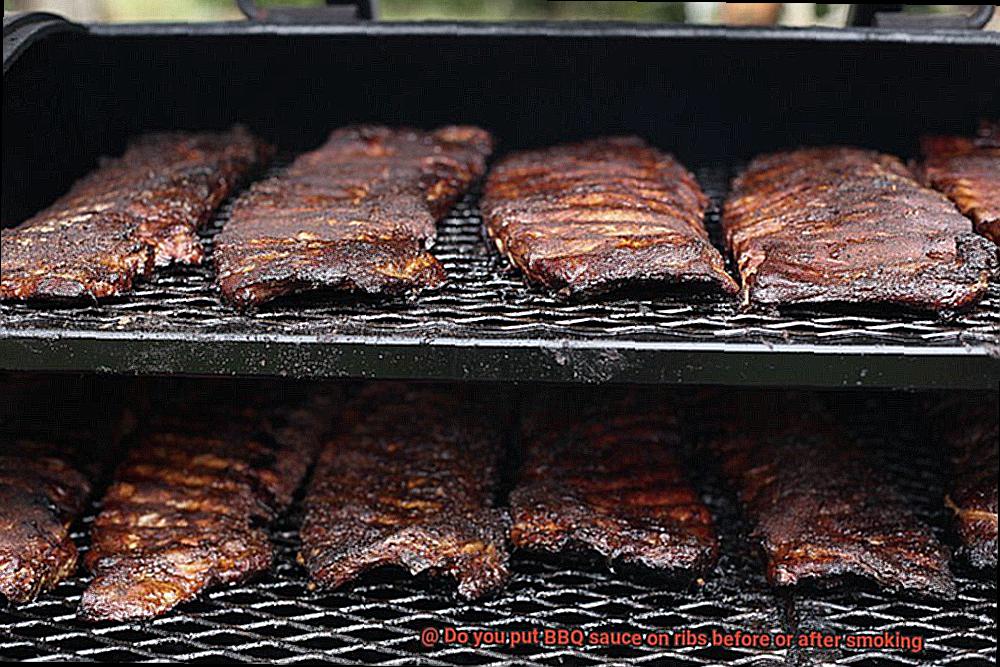
Let’s take a closer look at the pros and cons of applying BBQ sauce before smoking so that you can make an informed decision on how to prepare your ribs.
Pros:
- Flavorful Crust: Applying BBQ sauce before smoking can create a mouthwatering crust on the outside of the meat. The sugars in the sauce will caramelize and create a slightly crispy texture that adds another layer of flavor to your ribs. This crust can give your meat a distinctive taste that is hard to achieve otherwise.
- Moisture: Another benefit of applying BBQ sauce before smoking is that it helps keep the meat moist. As the sauce cooks with the natural juices of the meat, it creates a basting liquid that keeps everything tender and juicy on the inside.
- Flavor Infusion: By applying BBQ sauce before smoking, you can infuse even more flavor into your meat as it cooks. This means your ribs will be packed with flavor from the inside out, providing an unforgettable taste sensation for you and your guests.
Cons:
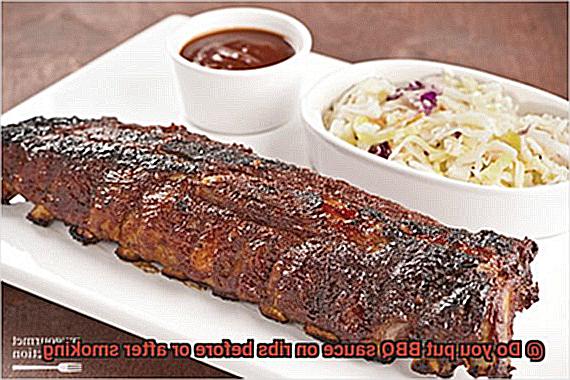
- Burnt Taste: One potential downside of applying BBQ sauce before smoking is that the sugars in the sauce can burn quickly if exposed to high heat for too long. This can result in a burnt taste and unpleasant texture that nobody wants. To avoid this, use a thin layer of sauce, and monitor the heat of your smoker closely.
- Masked Flavor: Some pitmasters believe that adding sauce too early in the cooking process can detract from the natural flavor of the meat. If you’re looking for a way to experience the full richness of your ribs, consider adding BBQ sauce after smoking instead.
- Watery Sauce: If you plan on cooking your ribs low and slow for several hours, the sauce may begin to break down and become watery. This can detract from the overall flavor and texture of your meat, leaving you with a less-than-perfect result.
Tips for Applying BBQ Sauce Before Smoking
Smoking ribs is an art form, and applying BBQ sauce before smoking is a critical step to achieving the perfect flavor and texture. Here are five tips to take your smoked ribs to the next level.
Choose the Right Sauce
The right BBQ sauce can make or break your smoked ribs. Choose a sauce that complements the natural flavors of the meat and adds an extra layer of sweetness or tanginess. Avoid sauces that are too thick or too sweet, as they can overpower the meat’s flavor.
Apply Sauce Evenly
When applying BBQ sauce to your ribs, ensure that you cover all sides evenly, including the top, bottom, and sides. Use a brush or your hands (with gloves) to do this. Be careful not to apply too much sauce, which can cause the ribs to become overly sweet or sticky.
Let the Sauce Marinate
Allow your ribs to marinate for at least 30 minutes after applying the BBQ sauce before smoking them. This allows the flavors to meld together and creates a delicious crust on the outside of the meat.
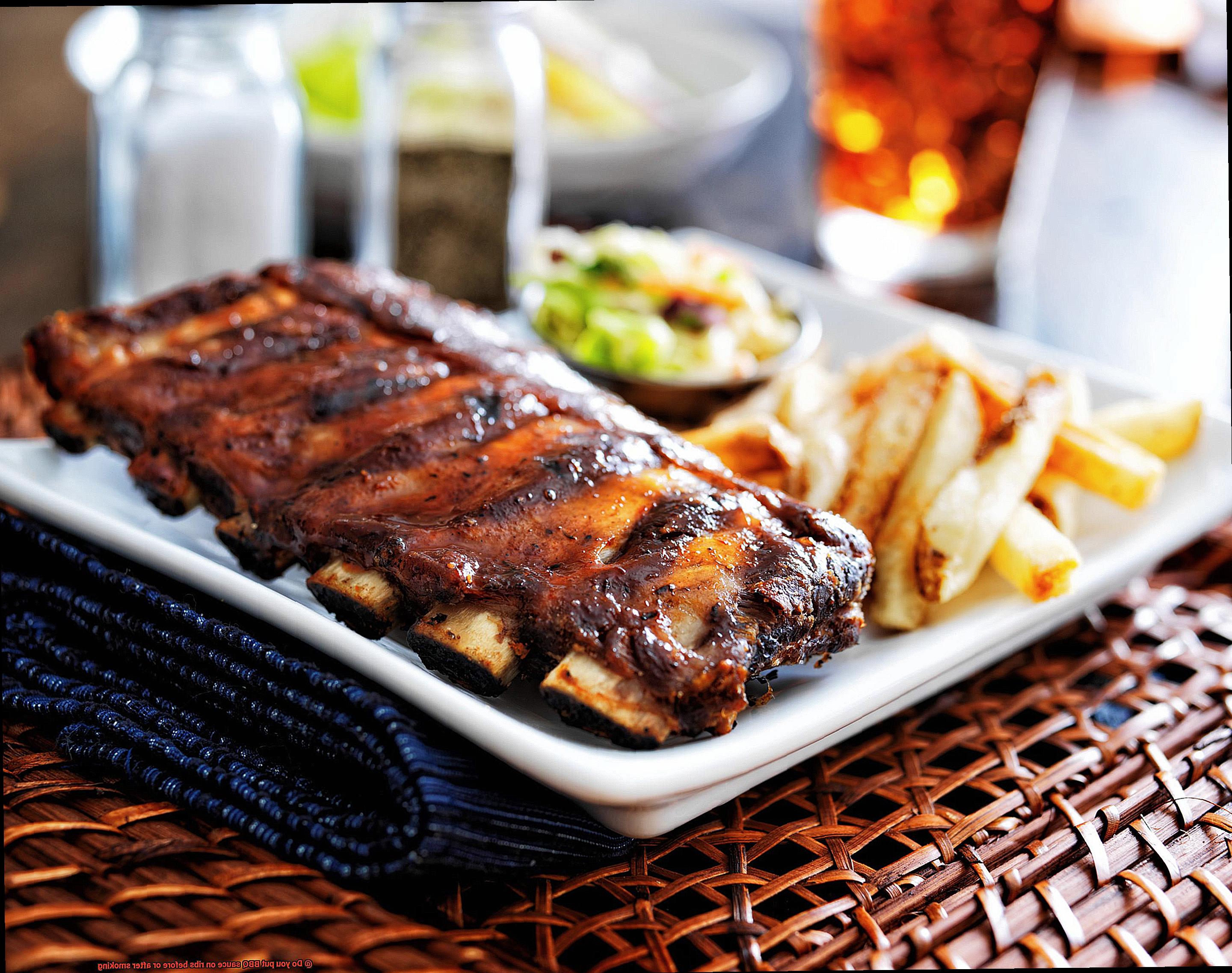
Monitor Your Smoker Temperature
Maintaining a consistent temperature in your smoker is essential when smoking ribs. Too much heat can cause the BBQ sauce to burn and become bitter. Aim for a temperature of around 225-250 degrees Fahrenheit for best results.
Timing is Everything
Timing is crucial when it comes to applying BBQ sauce before smoking your ribs. Applying sauce too early can lead to burning and charring, which can ruin the taste and texture of your ribs. Wait until the last 20-30 minutes of smoking before adding the BBQ sauce.
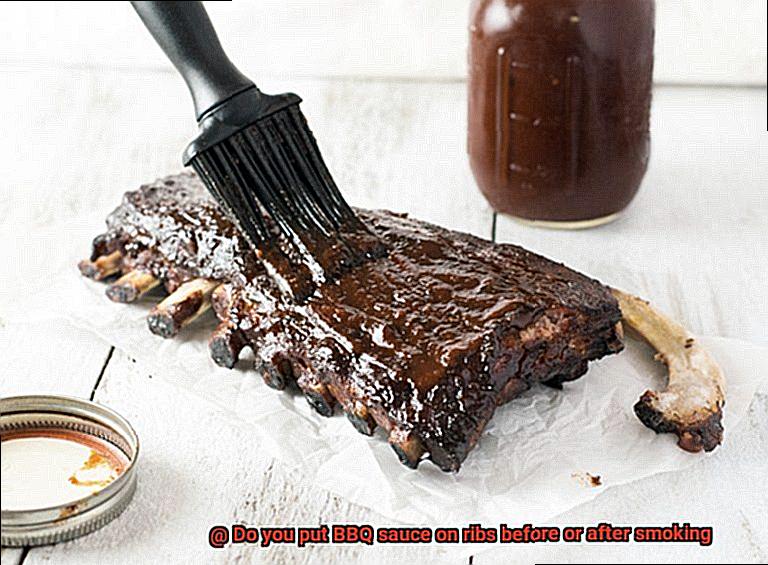
Before smoking your ribs, ensure that they are prepared correctly by removing any excess fat or membrane from the meat. Use a rub or seasoning blend before smoking to enhance the natural flavors of the meat and complement the BBQ sauce.
When it comes to applying BBQ sauce, use a brush or mop to apply a thin layer of sauce on both sides of the ribs. This allows for better absorption and prevents excess sauce from dripping off during cooking. Thin out the BBQ sauce with a small amount of apple cider vinegar or water to make it easier to spread evenly.
The Pros and Cons of Applying BBQ Sauce After Smoking
Firstly, applying BBQ sauce after smoking allows for the smoke flavor to fully penetrate the meat without being diluted by the sauce. This results in a stronger smoky flavor, which is what many people desire in a good BBQ rib. Additionally, applying sauce after smoking provides greater control over the flavor of your ribs. You can adjust the amount of sauce used and ensure that it doesn’t overpower the meat. This is especially important if you’re experimenting with different types of sauces or prefer a more subtle flavor.
However, there are some potential downsides to consider as well. One of the most significant cons is that the sauce can sometimes dry out and become sticky if applied too early or left on for too long. This can affect the texture of your ribs and potentially ruin their taste. Additionally, too much BBQ sauce can mask the natural flavor of the meat, which may be disappointing if you want to showcase that smoky goodness.
So, what’s the verdict? Ultimately, whether you apply your BBQ sauce before or after smoking comes down to personal preference. If you choose to apply your sauce after smoking, be sure to monitor the timing and amount used carefully. You want your ribs to have a delicious crust that complements their natural flavors, not detracts from them.
To help you make an informed decision, here’s a quick summary of the pros and cons:
Pros:
- Stronger smoky flavor
- Greater control over flavor
Cons:
- Sauce can dry out and become sticky
- Too much sauce can mask natural flavor
Tips for Applying BBQ Sauce After Smoking
BBQ ribs are a classic dish that many people enjoy, and a good BBQ sauce can make all the difference. But when it comes to applying BBQ sauce after smoking your ribs, there are a few tips to keep in mind to ensure that you get the best flavor and texture possible.
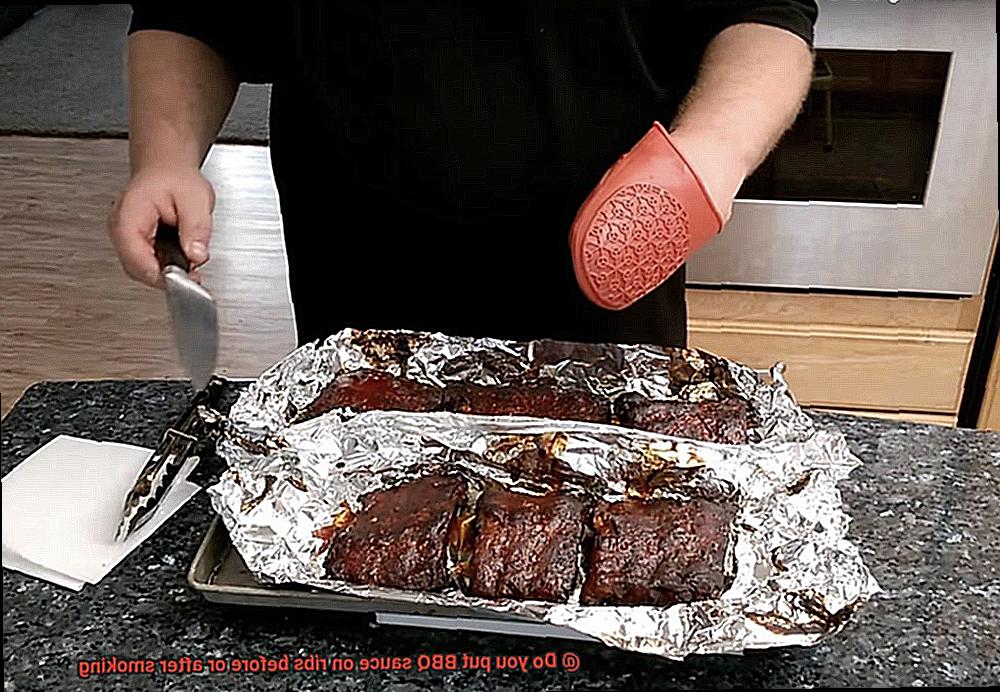
Timing is Everything
The timing and method of application can make all the difference when it comes to applying BBQ sauce on ribs. Applying the sauce too early can result in burnt, caramelized sauce that may not be desirable. On the other hand, waiting too long to apply the sauce may result in dry, flavorless ribs. It’s best to wait until the ribs are almost done before brushing on the sauce. This will help ensure that the sauce does not burn or become too thick on the meat.
Thin Layers are Best
Instead of drowning your ribs in a thick layer of sauce, it’s better to apply a thin layer of sauce. This will allow the flavors of the meat and smoke to shine through while still adding a tasty glaze to the ribs. Using a basting brush or a squeeze bottle can help you apply the sauce in a thin, even layer. It’s important to remember that less is more when it comes to BBQ sauce.
Warm Up Your Sauce
Warming up your BBQ sauce before applying it can help it spread more easily and evenly over your ribs, as well as preventing any clumping or separation of ingredients. Simply place it in a small saucepan on low heat for a few minutes, stirring occasionally. This will help the sauce spread more uniformly and ensure that every bite is flavorful.
Let it Set
Allowing the sauce to set on the ribs for a few minutes before serving can help the flavors meld together and create a delicious taste experience. This will also ensure that the sauce doesn’t slide off the ribs when you take a bite. By letting the sauce set on the ribs, you allow it to penetrate the meat and create a perfect balance of flavors.
Serve Sauce on the Side
Not everyone likes their ribs with BBQ sauce, so it’s always a good idea to serve the sauce on the side. This way, those who want it can add as much or as little as they like, while those who prefer their ribs plain can enjoy them that way. You can also experiment with different types of sauces and flavors until you find your perfect combination.
Different Types of Ribs and Their Best Uses
Ribs are a staple of barbecue cuisine, but not all ribs are created equal. The type of rib you choose can make a big difference in the final product, so it’s important to understand the different types and their best uses.
Spare Ribs
Spare ribs are one of the most popular types of ribs and come from the belly area of the pig. They are larger and meatier than baby back ribs, with a higher fat content that makes them more flavorful but also requires longer cooking times. Spare ribs are best suited for smoking or slow-cooking methods, as this allows the connective tissue to break down and tenderize the meat. When cooked correctly, spare ribs have a rich, juicy flavor that pairs well with a variety of sauces.
Baby Back Ribs
If you prefer a leaner cut of meat, baby back ribs may be your best bet. These smaller ribs come from the upper part of the pig’s ribcage and have less connective tissue than spare ribs. They cook quickly and are best suited for grilling or baking. Baby back ribs have a tender texture and a sweet flavor that pairs well with fruity or tangy sauces.
St. Louis-Style Ribs
St. Louis-style ribs are a variation of spare ribs that have been trimmed down to remove excess cartilage and bone, creating a more uniform shape. They are meatier than baby back ribs but less fatty than spare ribs, making them a great choice for those who want the meatiness of spare ribs without the extra fat. St. Louis-style ribs can be cooked using any method and are versatile enough to pair with a variety of sauces.
Beef Ribs
For those who prefer beef over pork, beef ribs are an excellent choice. These large, meaty ribs come from the beef cattle’s rib section and have a rich, beefy flavor that pairs well with bold barbecue sauces. Beef ribs can handle longer cooking times without drying out and are best suited for smoking or slow-cooking methods. When cooked low and slow, beef ribs have a melt-in-your-mouth texture that is hard to resist.
Country-Style Ribs
Country-style ribs are not technically ribs at all, but rather a cut of pork that comes from the shoulder area of the pig. They are meaty and tender, with a flavor that is similar to pork chops. Country-style ribs can be cooked quickly on the grill or baked in the oven, making them a great choice for weeknight dinners.
How to Choose the Right BBQ Sauce for Your Ribs
Ribs are a classic staple of backyard barbecues, but choosing the right BBQ sauce can be a daunting task. With so many options available, it’s important to consider factors like flavor, consistency, and ingredients. Here are five tips to help you choose the perfect BBQ sauce for your ribs:
Consider the Meat
Different meats pair better with different types of BBQ sauces. For example, pork ribs tend to pair well with a sweeter, tangier sauce, while beef ribs may be better suited to a smokier, spicier sauce. Consider the type of meat you’ll be grilling and choose a sauce that will complement its natural flavors.
Think About the Heat Level
When it comes to heat levels, some BBQ sauces pack a spicy punch while others are mild and sweet. Consider your personal preferences and those of your guests before choosing a sauce. If you like things spicy, go for a sauce with a little kick. If you prefer something milder, look for a sweeter or tangier option.
Look for Quality Ingredients
The quality of ingredients can make all the difference in the final taste and texture of your BBQ sauce. Look for sauces made with real ingredients like fresh herbs and spices rather than artificial flavors and preservatives. You’ll be able to taste the difference in the final product.
Experiment with Homemade Sauces
Creating your own BBQ sauce can be a fun and creative experience. Try experimenting with different ingredients and flavors to create a sauce that’s uniquely your own. You might discover a new favorite flavor combination that you never would have found otherwise.
Consider Dietary Restrictions
Some BBQ sauces contain ingredients like honey or Worcestershire sauce that may not be suitable for certain diets. Additionally, some people may prefer vegan or gluten-free options. Be sure to consider any dietary restrictions or preferences when selecting a BBQ sauce.
Experimenting with Different Sauces to Find Your Perfect Flavor Combination
The secret to achieving a mouthwatering flavor lies in experimenting with different sauces to find your perfect flavor combination. As an expert in this field, I have some tips and tricks to help elevate your BBQ game.
First, let’s talk about the two main types of BBQ sauce: tomato-based and vinegar-based. Tomato-based sauces are thick and sweet, while vinegar-based sauces are tangy and thin. Both have their unique flavor profiles, so don’t be afraid to try both and see which one satisfies your taste buds.
Once you’ve decided on a type of BBQ sauce, it’s time to start playing with different flavors. Popular flavors include honey, mustard, and bourbon. You can also add spices like cumin or smoked paprika for an extra kick.
Now the question is, how do you experiment with these flavors? One way is by basting your ribs with different sauces at different stages of the smoking process. Some prefer applying the sauce before smoking to allow the flavors to penetrate the meat deeply, while others prefer applying it after for a beautiful glaze on the outside of the ribs.
It’s essential to keep in mind that a little goes a long way when it comes to BBQ sauce. Start with a thin layer and add more as needed. You don’t want to overpower the natural flavor of the meat with too much sauce.
To sum up, when experimenting with different sauces, it’s important not to be afraid to get creative and try new things. The possibilities are endless when it comes to finding your perfect flavor combination for smoked ribs. Here are some sub-topics worth exploring:
- How to make your own BBQ sauce
- Pairing sauces with different types of meats
- Combining multiple sauces for a unique flavor
- Using fruit-based sauces for a sweet twist
- Incorporating international flavors into your sauce
Conclusion
In the world of BBQ, the question of whether to apply sauce before or after smoking ribs is a topic that ignites passionate debates among pitmasters. While both methods have their advantages and disadvantages, ultimately, it all boils down to personal preference.
If you decide to apply BBQ sauce before smoking your ribs, you can expect a flavorful crust, added moisture, and an infusion of flavors into the meat. However, there’s also a risk of ending up with a burnt taste or watery sauce that masks the flavor of your meat. On the other hand, applying sauce after smoking gives you greater control over the flavor and allows for a stronger smoky taste. But be wary that it may dry out or overpower the natural flavor of your meat.
To find the perfect BBQ sauce for your ribs, consider factors such as heat level, dietary restrictions, quality ingredients, experimenting with different flavors and meat types. Whether you prefer tomato-based or vinegar-based sauces or like adding honey, mustard or bourbon to your sauce; there are endless possibilities to find your perfect flavor combination.
Timing is everything when it comes to applying BBQ sauce on ribs. Apply a thin layer evenly on both sides of the ribs and keep a close eye on your smoker temperature. Letting the sauce marinate for at least 30 minutes before smoking or waiting until the last 20-30 minutes of smoking can ensure that you get a delicious crust without burning or charring.

